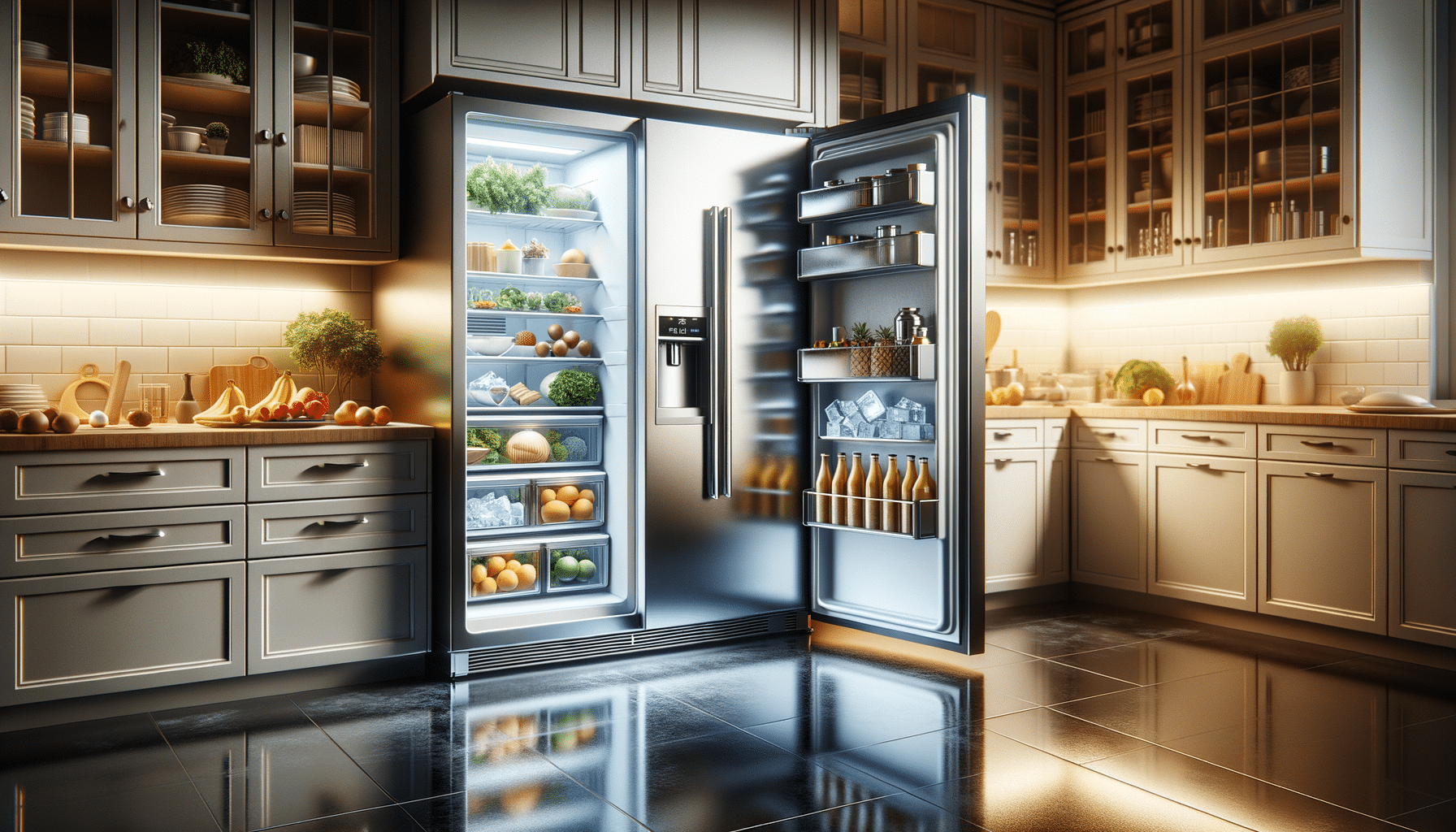
The Essential Role of Freezers in Modern Households
In today’s fast-paced world, the freezer has become an indispensable appliance in every household. From preserving leftovers to storing seasonal produce, freezers offer a convenient solution for minimizing food waste and maximizing freshness. Their ability to maintain a consistent temperature below freezing ensures that food items retain their nutritional value and taste over extended periods. This capability not only aids in efficient meal planning but also contributes to significant cost savings by allowing bulk purchases and reducing the frequency of grocery shopping trips.
Moreover, freezers play a crucial role in emergency preparedness. During unforeseen events like power outages or natural disasters, a well-stocked freezer can provide essential sustenance. Additionally, freezers support sustainable living by reducing food spoilage, which is a significant contributor to household waste. With the increasing awareness of environmental issues, many consumers are now opting for energy-efficient models that align with their eco-friendly lifestyles.
In essence, the freezer is more than just a storage box; it is a pivotal component of modern living that enhances convenience, savings, and sustainability. As we delve deeper into the various types and features of freezers, it becomes evident how this appliance has evolved to meet diverse consumer needs.
Types of Freezers: Choosing the Right Fit
When it comes to selecting a freezer, understanding the different types available can significantly impact your decision-making process. The three main types of freezers are upright, chest, and drawer freezers, each offering unique advantages.
Upright Freezers are popular for their vertical design, which resembles a refrigerator. They are ideal for those who prioritize easy access and organization. These freezers often come with adjustable shelves and door bins, allowing users to customize storage space according to their needs. However, they may consume more energy compared to their counterparts.
Chest Freezers, on the other hand, are known for their energy efficiency and larger capacity. Their horizontal design makes them suitable for storing bulky items and large quantities of food. Although they require more floor space and can be challenging to organize, their affordability and lower energy consumption make them an attractive option for many households.
Drawer Freezers are a relatively new addition to the market, offering a sleek and modern design that integrates seamlessly with kitchen cabinetry. They provide easy access and are perfect for those who prefer a minimalist aesthetic. However, their higher price point may be a consideration for budget-conscious consumers.
Ultimately, the choice of freezer type depends on individual preferences, available space, and specific storage needs. By evaluating these factors, consumers can select a freezer that enhances their lifestyle and complements their home environment.
Energy Efficiency and Environmental Impact
As environmental concerns continue to rise, the energy efficiency of appliances has become a significant consideration for consumers. Freezers, being one of the most energy-intensive household appliances, have seen considerable advancements in energy-saving technologies.
Modern freezers are equipped with features such as improved insulation, more efficient compressors, and advanced temperature control systems. These innovations not only reduce energy consumption but also enhance the freezer’s overall performance. When selecting a freezer, it is advisable to look for models with high energy ratings and certifications that indicate lower environmental impact.
Additionally, some manufacturers have introduced freezers with eco-friendly refrigerants that minimize greenhouse gas emissions. These environmentally conscious designs align with global efforts to combat climate change and promote sustainable living.
Consumers can further reduce their environmental footprint by adopting smart usage practices. For instance, maintaining an optimal temperature setting, ensuring proper ventilation around the appliance, and regularly defrosting manual defrost models can enhance energy efficiency. By making informed choices and adopting responsible habits, individuals can enjoy the benefits of a freezer while minimizing their impact on the planet.
Innovative Features and Technology
The evolution of freezer technology has introduced a range of innovative features that enhance convenience and functionality. From smart connectivity to advanced temperature control, these features cater to the modern consumer’s desire for efficiency and ease of use.
Smart freezers, equipped with Wi-Fi connectivity, allow users to monitor and control their appliance remotely via smartphone apps. This feature is particularly useful for adjusting settings or receiving alerts about temperature fluctuations, ensuring food safety even when away from home.
Another noteworthy innovation is the introduction of dual cooling systems, which maintain separate temperature zones for different types of food. This technology helps preserve the quality and flavor of various items by preventing odor transfer and ensuring optimal storage conditions.
Additionally, some freezers now come with rapid cooling or fast freeze functions, which quickly lower the temperature to preserve the freshness of newly added items. This feature is beneficial for preserving the texture and nutritional value of delicate foods like fruits and vegetables.
As technology continues to advance, freezers are becoming more versatile and user-friendly, offering solutions that cater to diverse lifestyles and preferences. By embracing these innovations, consumers can elevate their kitchen experience and enjoy the full potential of their freezer.
Maintenance and Care for Longevity
Proper maintenance and care are essential for ensuring the longevity and optimal performance of a freezer. Regular upkeep not only extends the appliance’s lifespan but also enhances its efficiency, resulting in lower energy bills and better food preservation.
One of the fundamental maintenance tasks is cleaning the freezer regularly. This involves defrosting the appliance if it is a manual defrost model and cleaning the interior with a mild detergent solution. Removing food debris and spills prevents odors and maintains a hygienic environment.
It is also crucial to check and clean the freezer’s condenser coils, as dust accumulation can impede airflow and reduce efficiency. Ensuring that the door seals are intact and free from damage is another important aspect of maintenance, as faulty seals can lead to energy loss and temperature fluctuations.
Additionally, organizing the freezer properly can improve airflow and accessibility. Grouping similar items together and using clear containers can make it easier to locate items and reduce the time the door is open, conserving energy.
By adhering to these maintenance practices, consumers can enjoy the benefits of a reliable and efficient freezer, ensuring it remains a valuable asset in the household for years to come.
